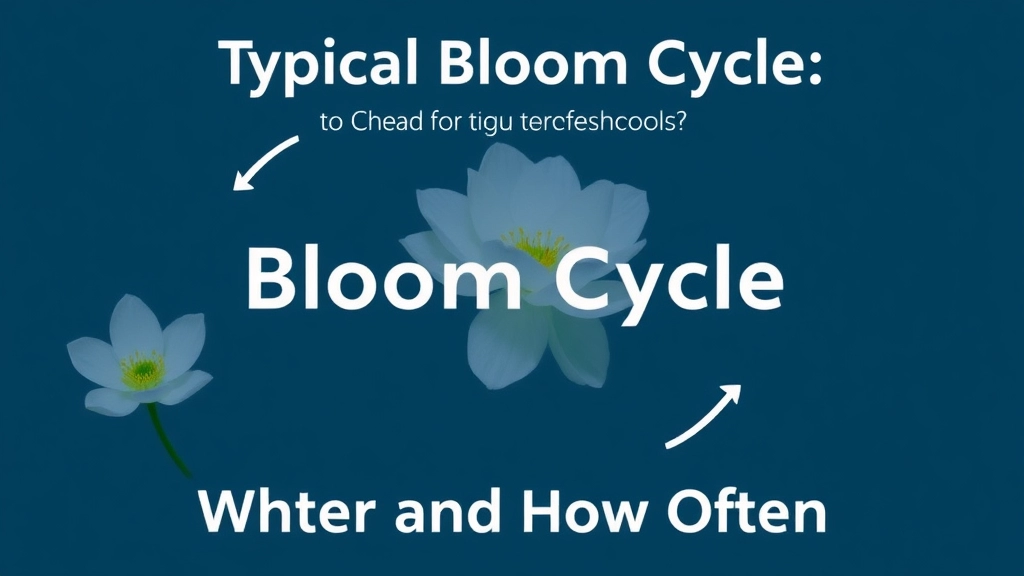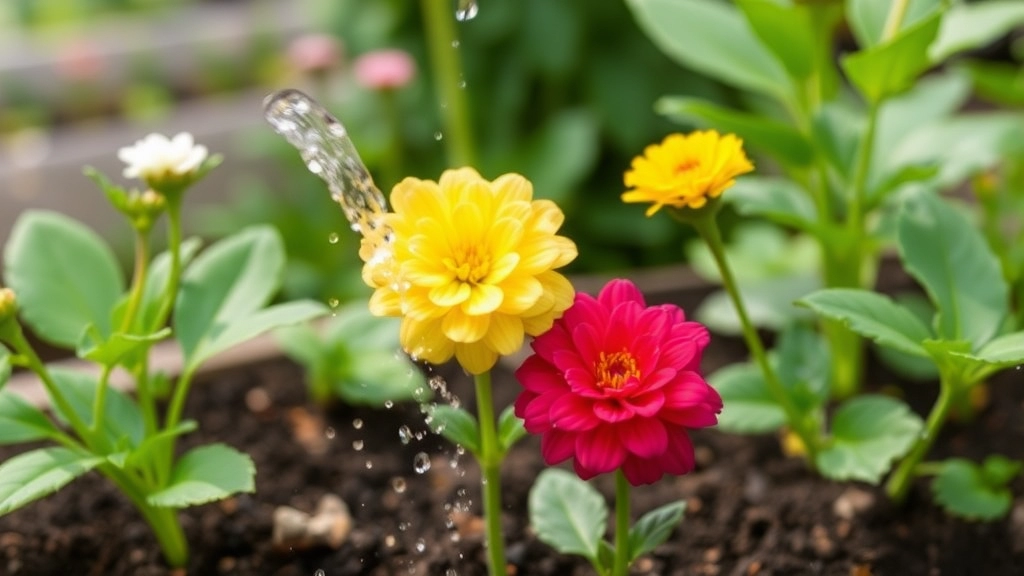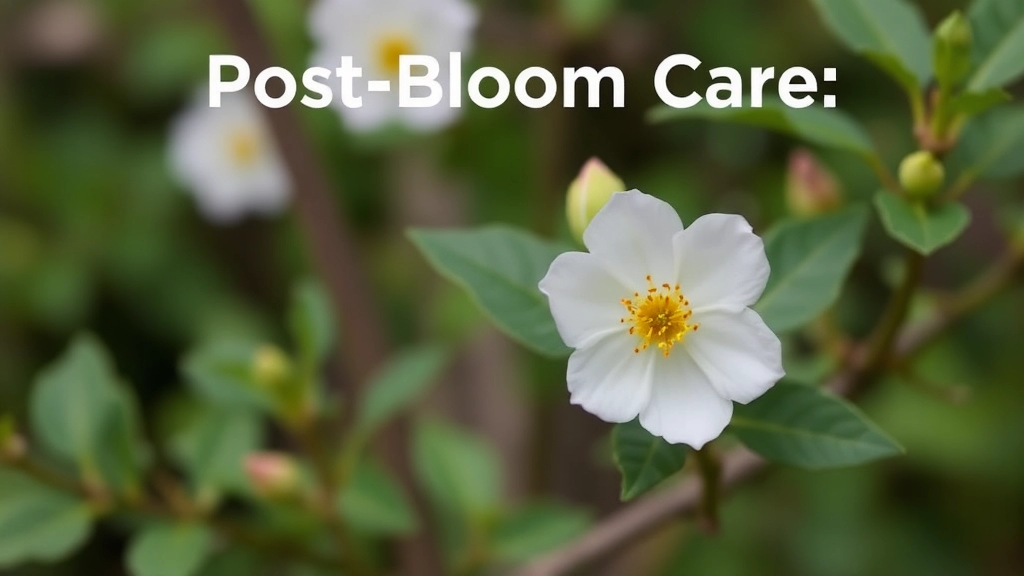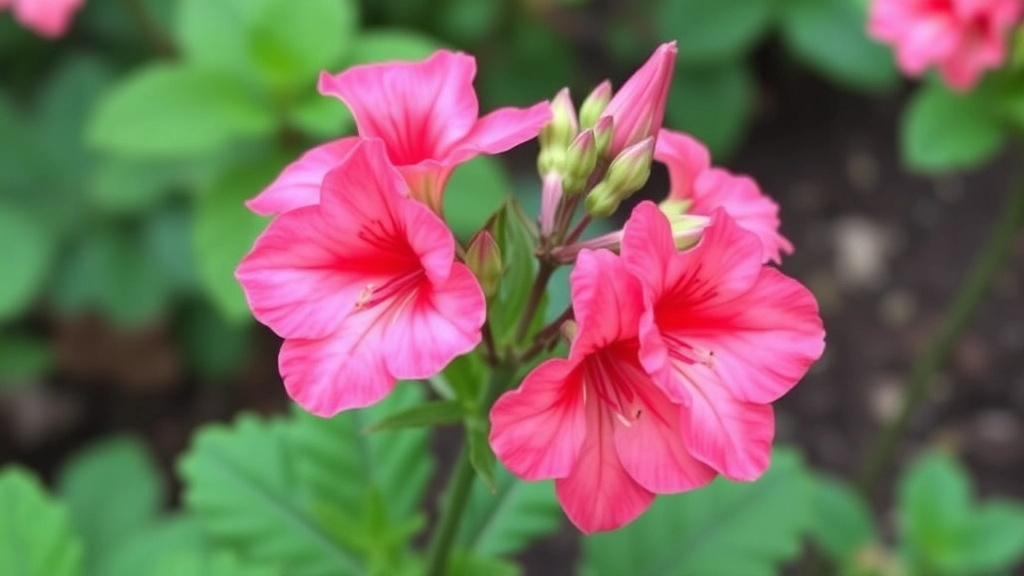How Often Do Kalanchoe Bloom?
Ever wondered, “How often do Kalanchoe bloom?” You’re not alone. As a Kalanchoe enthusiast, I’ve delved deep into their blooming cycles. Typically, these vibrant succulents bloom once a year, usually in late winter to early spring. However, with the right care, you can encourage them to rebloom. Understanding their natural cycle and optimal conditions is key.
Encouraging Frequent Blooms
To get your Kalanchoe to bloom more frequently, focus on light control, proper watering, and soil conditions. They thrive in bright, indirect light and need well-draining soil to prevent root rot. After the initial bloom, a rest period is essential. Pruning spent flowers and adjusting light exposure can set the stage for a new bloom cycle. Let’s dive into the specifics to keep your Kalanchoe blooming beautifully.
Optimal Blooming Conditions for Kalanchoe
Are you struggling to get your Kalanchoe to bloom beautifully?
Understanding the optimal blooming conditions is key to unlocking the vibrant flowers of this resilient succulent.
Light Requirements
Kalanchoe thrives in bright, indirect sunlight.
- Location: Place your plant near a south or west-facing window.
- Duration: Aim for at least 6 hours of light daily.
Too little light can lead to leggy growth and fewer blooms, while too much direct sunlight can scorch the leaves.
Temperature
Kalanchoe prefers a warm environment.
- Ideal Range: Keep temperatures between 20°C to 25°C during the day and slightly cooler at night.
- Avoid Extremes: Protect your plant from drafts and sudden temperature changes.
Humidity and Airflow
Kalanchoe is not particularly fussy about humidity but thrives in moderate conditions.
- Air Circulation: Ensure good airflow around the plant to prevent diseases.
- Humidity Levels: Aim for 40-60% humidity for optimal growth.
Fertilisation
A well-balanced fertiliser can promote blooming.
- Type: Use a diluted, water-soluble fertiliser every 4-6 weeks during the growing season.
- Timing: Start fertilising in spring when the plant begins to show new growth.
If you want to delve deeper into why your Kalanchoe might not be flowering, check out our guide on why your Kalanchoe is not flowering. Additionally, our optimal care for Kalanchoe Blossfeldiana article provides more insights on achieving the best growth and blooming results.
Typical Bloom Cycle: When and How Often

So, you’re wondering when your Kalanchoe will bloom and how often, right?
Let’s dive into the typical bloom cycle of this vibrant plant.
Kalanchoe is known for its stunning clusters of flowers.
Blooming Period
- Initial Bloom: Most Kalanchoe varieties bloom in late winter to early spring.
- Duration: Once they start, you can enjoy their flowers for about 6 to 8 weeks.
- Frequency: After the initial bloom, with the right care, you might see them flower again in the fall.
Factors Influencing Blooming
- Light: They thrive in bright, indirect sunlight.
- Temperature: Keeping them in a warm spot (around 20°C) helps trigger blooming.
- Fertilization: A balanced fertiliser during the growing season can do wonders.
Reblooming
If you’re keen on seeing those flowers again, patience is key.
After the first bloom, allow the plant to rest for a bit.
Once it’s had time to recuperate, you can encourage it to bloom again with proper light control and care.
How to Encourage Reblooming Through Light Control
If you’re wondering why your Kalanchoe isn’t blooming again, the answer often lies in how you manage its light exposure.
Understanding Light Requirements
Kalanchoe thrives in bright, indirect sunlight. To encourage reblooming, consider the following:
- Optimal Light Duration: Aim for around 14 hours of light per day during the growing season. This mimics its natural habitat and stimulates flower production.
- Use of Artificial Light: If natural light is insufficient, consider using grow lights. Position them about 12 inches above the plant for best results.
- Avoiding Direct Sunlight: While Kalanchoe loves light, too much direct sunlight can scorch its leaves. Filter the light with sheer curtains if necessary.
Controlling Light for Reblooming
Manipulating light exposure can be a game-changer for your Kalanchoe. Here’s how to do it effectively:
- Dark Period: To trigger blooming, introduce a dark period of at least 12-14 hours. This simulates winter conditions, prompting the plant to prepare for flowering.
- Seasonal Adjustments: As the seasons change, adjust your light exposure accordingly. In winter, reduce the amount of light to encourage dormancy, followed by increased light in spring.
- Consistency is Key: Keep a regular schedule for light exposure. Sudden changes can stress the plant and hinder blooming.
For more detailed care tips, check out our comprehensive guide on post-flowering Kalanchoe care and learn how to make your Kalanchoe flower again with our expert advice on encouraging reblooming.
Watering and Soil Tips for Extended Blooms

When it comes to ensuring your Kalanchoe thrives and produces stunning blooms, proper watering and soil management are crucial.
Many plant enthusiasts often wonder: How much water is too much?
Watering Guidelines:
- Frequency: Water your Kalanchoe every two to three weeks, allowing the top inch of soil to dry out between waterings.
- Technique: Water thoroughly until it drains from the bottom, ensuring the roots receive adequate moisture without sitting in water.
- Signs of Overwatering: Yellowing leaves or wilting can indicate too much water. Adjust your schedule accordingly.
- Signs of Underwatering: If the leaves appear shrivelled or the plant looks droopy, it may be time to hydrate.
Soil Considerations:
- Soil Type: Use a well-draining cactus or succulent mix. This prevents water from pooling and promotes healthy root growth.
- pH Level: Aim for a slightly acidic to neutral pH (around 6.0 to 7.0) to support optimal growth.
- Repotting: Every couple of years, consider repotting your Kalanchoe to refresh the soil and provide more space for growth.
Troubleshooting Bloom Issues: Common Mistakes
As we delve into the intricacies of Kalanchoe care, it’s essential to address the common pitfalls that can hinder blooming. Many enthusiasts find themselves puzzled when their plants fail to produce flowers despite their best efforts.
Common Mistakes to Avoid:
- Inadequate Light Exposure: Kalanchoe thrives in bright, indirect sunlight. Insufficient light can lead to weak growth and poor blooming. Ensure your plant receives at least 6 hours of light daily.
- Improper Watering Practices: Overwatering is a frequent issue. Kalanchoe prefers to dry out between waterings. Aim for a balance; water when the top inch of soil feels dry. For a detailed guide, check out how to propagate Kalanchoe in water.
- Neglecting Pruning: Failing to prune spent flowers can divert energy away from new growth. Regularly remove dead blooms to encourage fresh ones. Learn more about post-bloom Kalanchoe care.
- Ignoring Temperature Needs: Kalanchoe prefers a stable environment. Sudden temperature changes or drafts can stress the plant, affecting its blooming cycle. Keep it in a warm spot, ideally between 18°C to 24°C.
- Fertiliser Missteps: Over-fertilising can lead to lush foliage at the expense of flowers. Use a balanced fertiliser during the growing season, but cut back in winter.
By recognising and correcting these common mistakes, you can set the stage for a vibrant display of blooms.
Post-Bloom Care: Pruning and Rest Periods

So, your Kalanchoe has dazzled you with its vibrant blooms, and now you’re wondering what to do next.
Post-Bloom Care is Essential!
After the flowers fade, it’s time to give your plant some TLC.
1. Pruning for Health
- Remove Dead Blooms: Snip off those spent flowers to encourage new growth.
- Trim Back Leaves: If leaves are looking tired or yellow, a little trim can help the plant focus its energy.
- Shape the Plant: Don’t be shy! Shape it to keep it looking full and bushy.
2. Rest Periods Matter
- Let It Rest: After blooming, Kalanchoes need a break. This is when they recharge for the next round of flowers.
- Reduce Watering: Scale back on water during this rest period. Allow the soil to dry out a bit between waterings.
- Lower Light Exposure: Keep it in a slightly darker spot to mimic its natural dormancy.
Why This Matters?
Proper post-bloom care can mean the difference between a healthy plant and one that struggles.
If you’re eager to keep your Kalanchoe blooming for as long as possible, you’re not alone. Many plant enthusiasts share the desire to prolong the vibrant flowers of this resilient succulent. Fortunately, there are several effective strategies to achieve this.
### Optimal Light Conditions
– **Bright Indirect Light:** Ensure your Kalanchoe receives plenty of bright, indirect sunlight. This helps encourage more blooms.
– **Rotate Regularly:** Rotate the plant every couple of weeks to ensure even light exposure on all sides.
### Temperature Management
– **Ideal Range:** Maintain a temperature between 18°C to 24°C (65°F to 75°F). Avoid extreme temperature fluctuations.
– **Nighttime Coolness:** A slight drop in temperature at night can encourage blooming.
### Fertilisation Techniques
– **Balanced Fertiliser:** Use a balanced, water-soluble fertiliser every 4-6 weeks during the growing season.
– **Dilution is Key:** Always dilute the fertiliser to half-strength to avoid nutrient burn.
### Pruning for Growth
– **Remove Spent Blooms:** Regularly deadhead spent flowers to redirect energy to new growth.
– **Light Pruning:** Prune back leggy growth to encourage bushier, more compact plants.
### Watering Wisely
– **Soil Check:** Ensure the soil dries out between waterings. Overwatering can lead to root rot, which stifles blooming.
– **Humidity Control:** Kalanchoe prefers low to moderate humidity, so avoid placing it in overly humid environments.
For more detailed guidance on keeping your Kalanchoe healthy and blooming, check out our [ultimate guide to flowering Kalanchoe care tips for blooming](https://planthq.org/ultimate-guide-to-flowering-kalanchoe-care-tips-for-blooming/) and learn about the [optimal care guide for Kalanchoe paddle plant](https://planthq.org/optimal-care-guide-for-kalanchoe-paddle-plant/).
FAQs on Kalanchoe Bloom Cycle and Care
How often do Kalanchoe plants bloom?
Kalanchoe plants typically bloom in late winter to early spring. With the right care, they might bloom again in the fall.
How long do Kalanchoe blooms last?
Once they start blooming, you can enjoy their flowers for about 6 to 8 weeks.
What factors influence Kalanchoe blooming?
Several factors influence Kalanchoe blooming, including light, temperature, and fertilization. They thrive in bright, indirect sunlight, warm temperatures around 20°C, and benefit from a balanced fertilizer during the growing season.
How can I encourage my Kalanchoe to rebloom?
After the first bloom, allow the plant to rest. With proper light control and care, you can encourage it to bloom again. Patience is key!
How often should I water my Kalanchoe?
Water your Kalanchoe every two to three weeks, allowing the top inch of soil to dry out between waterings.
What type of soil is best for Kalanchoe?
A well-draining cactus or succulent mix is ideal for Kalanchoe. This prevents water from pooling and promotes healthy root growth.
What should I do after my Kalanchoe has finished blooming?
Post-bloom care is essential. Remove dead blooms, trim back tired or yellow leaves, and shape the plant to keep it looking full and bushy. Also, allow the plant to rest by reducing watering and lowering light exposure.
How can I tell if I’m overwatering or underwatering my Kalanchoe?
Signs of overwatering include yellowing leaves or wilting. Adjust your watering schedule accordingly. Signs of underwatering include shriveled leaves or a droopy plant, indicating it may need more water.
When should I consider repotting my Kalanchoe?
Consider repotting your Kalanchoe every couple of years to refresh the soil and provide more space for growth.
Why is post-bloom care important for Kalanchoe?
Proper post-bloom care can mean the difference between a healthy plant and one that struggles. It helps the plant recharge and prepare for the next round of flowers.
References
-
Gardening Know How: Kalanchoe Plant Blooming
-
The Spruce: Kalanchoe Plant Profile
-
House Plants Expert: Kalanchoe Plant Care
